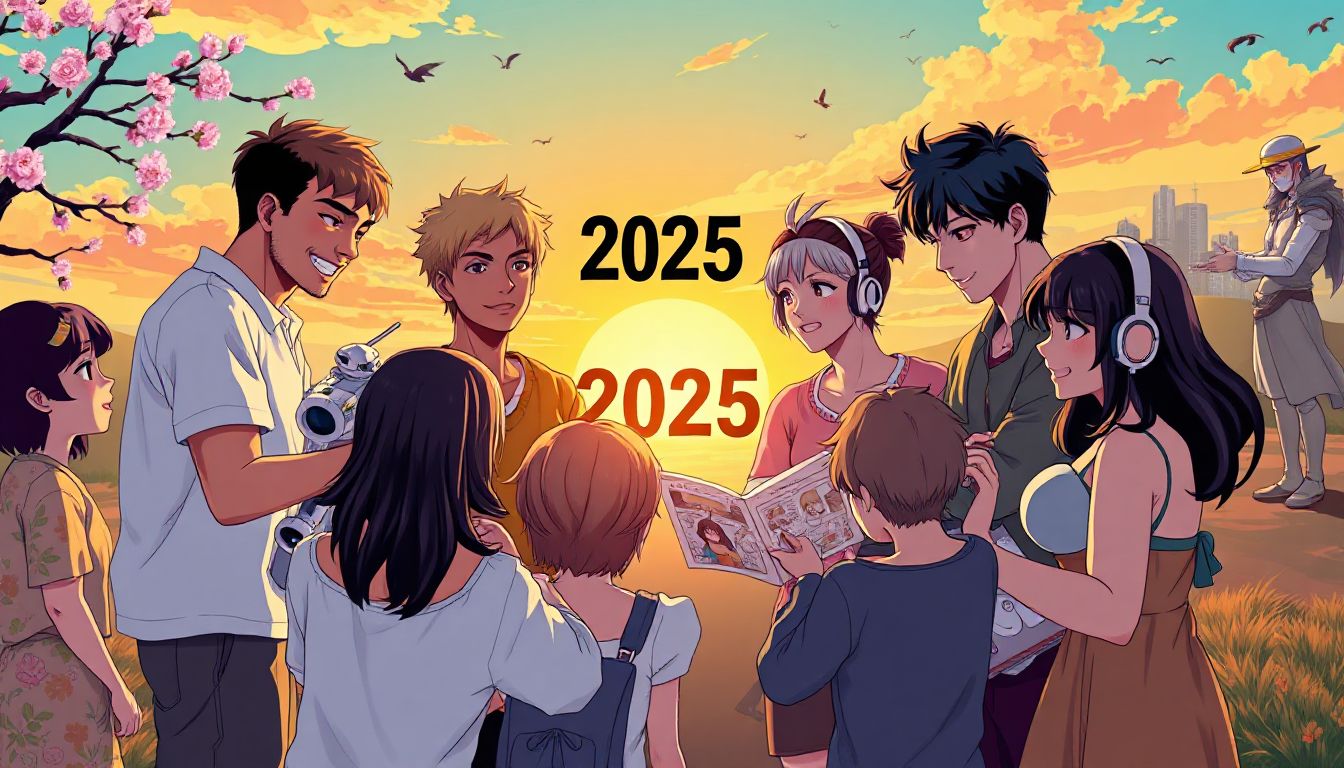
Anime, once a niche fascination, has unequivocally cemented its position as a dominant force in global entertainment. As we approach 2025, its cultural footprint extends far beyond its Japanese origins, influencing fashion, language, art, and even societal perceptions worldwide. This article will unpack the multifaceted ways anime continues to shape international audiences, exploring its transformative power and enduring appeal in the contemporary landscape. From its visual language to its narrative depth, anime’s influence is undeniable, creating a rich tapestry of shared experiences and creative expression across diverse cultures.
Anime’s Ascent: From Niche Interest to Global Phenomenon
Have you noticed how much anime is around us now? It wasn’t always this way. For many years, Japanese animation was a quiet secret shared by a few fans. But that has changed big time.
Today, anime is everywhere. It shows up on streaming services, in movies, and even in daily conversations. This journey from a small subculture to a major part of popular culture is worth a closer look.
The Early Waves: Gateway Anime and Initial Exposure
Back in the day, certain anime shows opened doors for many. Think about Astro Boy or Speed Racer. These cartoons first aired in Western countries. They gave many their first taste of Japanese animation.
Early Gundam series also found an audience. These early shows were often changed a bit for local viewers. But they started a quiet buzz, preparing the ground for what came next.
The Internet Era: Fandom, Streaming, and Accessibility
The internet changed everything for anime. Fan groups, often called “fansubs,” started translating shows. This meant people could watch anime almost as soon as it aired in Japan. It was a game-changer.
Then came streaming sites like Crunchyroll and Netflix. These platforms made anime super easy to find. Anyone with an internet connection could watch countless shows. This widespread access helped build massive global fan groups, connecting people who loved anime from all corners of the planet.
Visual Language and Aesthetic Influence
Anime has a look all its own. It’s distinct and often beautiful. You can spot anime art in many places now, even outside of Japan. Its unique styles have made a big mark on design, illustration, and even how other cartoons look.
We often see artists adopting parts of anime’s art style. It shows up in Western cartoons, comic books, and digital drawings. Anime’s visuals are shaping how we draw and create images today.
Iconic Art Styles and Character Design
Anime comes with many famous art styles. Think about the big eyes in shojo anime or the strong lines in shonen shows. Mecha anime, with its giant robots, has its own special look too.
These styles are instantly recognizable. You can see their influence in many Western animations and comic books. They help artists worldwide create compelling characters and scenes.
The Power of Animation Techniques
Anime also brought new ways to animate. Dynamic camera angles, for example, make scenes feel more active. Characters show emotions in very clear, often exaggerated ways. Action sequences burst with energy and unique flair.
These animation methods have influenced how cartoons are made all over. Animators everywhere now use some of these same tricks. Anime’s approach has helped make animation more exciting and visually rich.
Narrative Depth and Thematic Resonance
Beyond its looks, anime offers deep stories. It tackles big ideas and feelings. This makes anime connect with people no matter where they live. It can handle tough subjects in ways that stick with you.
Anime stories often explore what it means to be human. They make us think and feel deeply. This emotional strength helps anime reach many people.
Exploring Universal Themes and Emotional Complexity
Anime is great at showing human experiences. Stories often explore love, friendship, or dealing with sadness. Shows like Neon Genesis Evangelion dive into our minds. Your Lie in April touches hearts with its music and grief.
Violet Evergarden shows us the pain of loss and finding purpose. These stories often go deep into thoughts and feelings. They appeal to mature audiences all over the world.
Genre Innovation and Storytelling Tropes
Anime has also created new kinds of stories. Have you heard of “isekai”? That’s where a character gets sent to another world. “Magical girl” shows feature young heroines with special powers. Cyberpunk anime mixes high tech with dark futures.
These unique ways of telling stories have been picked up by creators internationally. Many writers and filmmakers now use similar ideas. Anime keeps pushing the limits of what a story can be.
Fandom Culture and Community Building
Anime fans are a passionate bunch. They form huge communities around the globe. These groups often shape popular culture and create their own fun activities. Fans don’t just watch; they become part of the anime experience.
They engage with shows and share their love. This creates a strong network of shared interest.
The Rise of Cosplay and Creative Expression
Cosplay is a big part of anime fandom. People dress up as their favorite characters. You see amazing costumes at conventions all over the world. Cosplay is a fun way to show off creativity and love for a series.
Many fans also share their cosplay on social media. It’s a true global subculture.
Online Communities and Social Media Engagement
Online spaces are where anime fans come alive. Websites like Reddit, Twitter, and TikTok host huge anime discussions. Fans share art, theories, and funny clips. These platforms help people connect and feel like part of a bigger group.
They make it easy to talk about new episodes or classic series. It’s how anime communities stay strong and connected worldwide.
Economic and Commercial Impact
Anime is big business. It makes a lot of money globally. This includes everything from toys to video games to movies. Anime properties generate significant sales and revenue streams.
This economic influence keeps growing. It affects many industries far beyond just animation.
Merchandise and Global Marketplaces
The anime merchandise business is massive. You can buy figures, clothes, and manga comics. Soundtracks from your favorite shows are popular too. International sales of these items are huge and keep growing.
You can find specialized stores and online shops dedicated just to anime goods. This shows how strong the demand is worldwide.
Anime in Gaming and Other Media
Anime has a strong link with video games. Many popular games are based on anime. Or they use anime-like art styles. This crossover creates many hit titles.
Anime also influences live-action movies and TV shows. Many stories get adapted for a broader audience. These projects bring in a lot of money and show anime’s wide appeal.
The Future Landscape: Evolving Trends and Continued Influence
What’s next for anime? It keeps changing and finding new ways to reach people. The way we watch and make anime will surely look different in the coming years. Its cultural impact will only grow.
New technologies and changing stories will shape its path forward.
AI, VR, and New Frontier Technologies
New tech might change how anime is made. Imagine AI helping animators create scenes faster. Or think about VR experiences where you can step into an anime world. These advancements could make anime even more immersive.
They might help anime reach even more people globally. It’s exciting to think about what’s possible.
Inclusivity, Diversity, and Evolving Narratives
Anime stories are becoming more open to everyone. Characters and plots are showing more different kinds of people. This reflects how society is changing around the world. More people want to see themselves in the stories they watch.
This push for varied storytelling will likely lead to fresh and exciting anime content in the future.
Conclusion: A Lasting Cultural Imprint
Anime has truly changed the world. From its humble beginnings, it became a global cultural powerhouse. Its art, stories, and fandom connect millions across borders. We’ve seen how it shaped visual styles, explored deep themes, and built huge communities.
Anime’s economic reach is vast, and its future looks bright. It continues to inspire, entertain, and bring people together. The cultural impact of anime in 2025 is not just about entertainment; it’s about a shared global experience.

